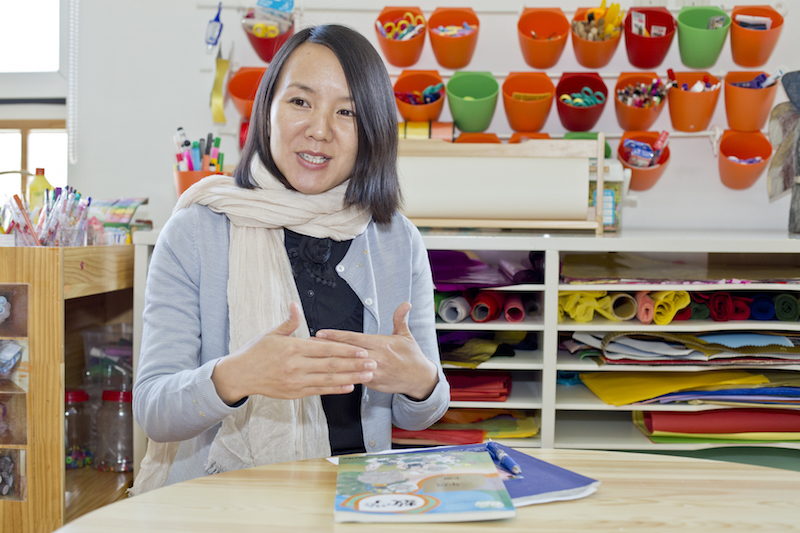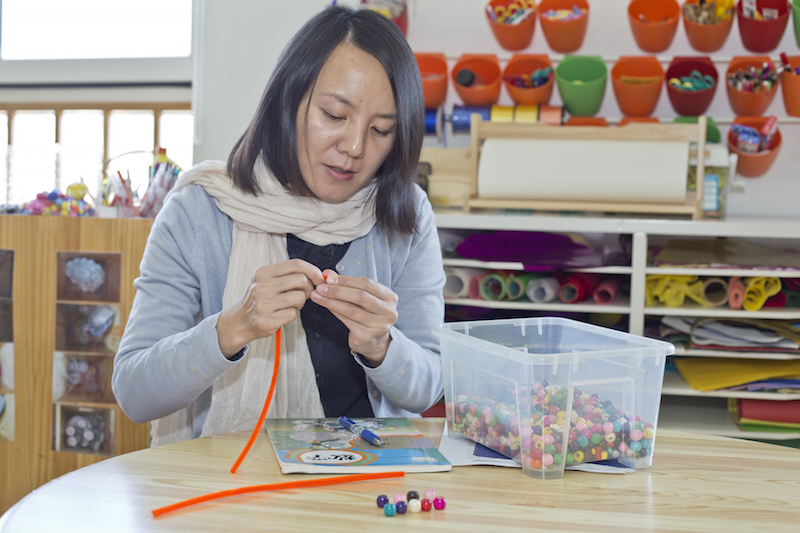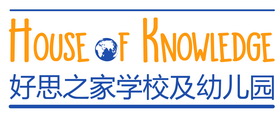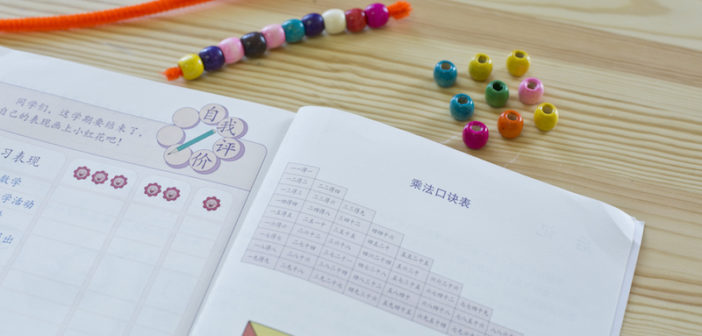The young boy looks up at the market vendor, and quickly hands over the exact amount of cash. That seller smiles back at the clever little international, who’d just finished bartering with him in fluent Mandarin. After negotiating with the Chinese vendors and making his purchases, the boy and his classmates (and the teachers supervising them) will return to their math class at House of Knowledge’s (HOK’s) Shunyi campus, to discuss, in English, what happened.
Such are the practical, multifaceted and fun assignments given to students at the school, which prides itself on helping students become multilingual and multicultural. This particular market assignment is one of the excursions that HOK’s math students make to give the skills they learned in the classroom real life heft.

Wei Laoshi of HOK
Venturing out on such field trips to use their math skills is a breeze for the HOK students because they are already deeply immersed in HOK’s bi-numeracy program, following the Chinese curriculum and its repetition heavy style of multiplication tables and equation drilling, while also being taught more abstract approaches by their western teachers.
“Our students are from different countries— China, Europe, America— so they will get two ways to learn math. And they will get an opportunity to choose the way that suits them,” Wei Laoshi, who heads up HOK’s math department, says of the school’s bi-numeracy approach. Below she tells us more about the benefits of the unique math methods.

HOK’s students not only use conventional textbooks but also thread beads onto pipe cleaners and others use handheld materials to help them better visualize the concepts
The added benefit of the bi-numeracy program is teachers’ collaboration effort, they use the best of both worlds to give the students an enriched approach.
“Our Chinese and English math teachers are co-teaching, but we follow the Chinese national standard. So the Chinese and English math teachers are always on the same page, and follow the same content.”
“For example, right now our Grade 2 class is learning multiplication tables. The Chinese teacher gives them tables and teaches them through repetition first, then they do more visual and abstract practice with beads, pieces of dry pasta, or other materials with their Western teachers.”
“My daughter is in a Chinese public school, she doesn’t like doing math in the traditional way on paper all the time. She’ll complain ‘Oh it’s too much for me,’ and sometimes it even makes her cry. But here the students have a choice, and are able to learn more than one way and then find which method is most comfortable for them.”

The students use China’s standardized math curriculum, and its repetitive nature gives the children a very solid foundation
“They benefit so much from learning both the Chinese and Western styles. The Chinese style gives them the repetition they need to become very familiar with it, but the Western style helps them to engage with it in a different way, which is especially good for students who struggle with math.”
This different approach to learning focuses on the student taking ownership of their own learning based on their personal strengths and preferences.
“This way, our students have more chances to understand the concepts, by learning the same thing in different ways. That way, the students can think “I have that choice of how to do it or approach it, and I’ll be more comfortable.”
“As a teacher, I can see that our students are so interested in math. They can all choose a method that suits them, and realize: “Hey, this is easy and I like it!”
It’s an approach that benefits the students well beyond math class.
“The students also develop their language skills, go back and forth between Chinese and English to understand and explain the concepts.”
“We also give the students context and history and explain how sundials were used to measure time in both ancient China and in Europe, for example. That way they are not only learning about math but also about both cultures.”
 This blog is sponsored by HoK
This blog is sponsored by HoK
Photos: Uni You





1 Comment
Pingback: The Benefits of Bi-Numeracy: Why Learning Multiple Approaches to Math Matters | HOK SCHOOLS